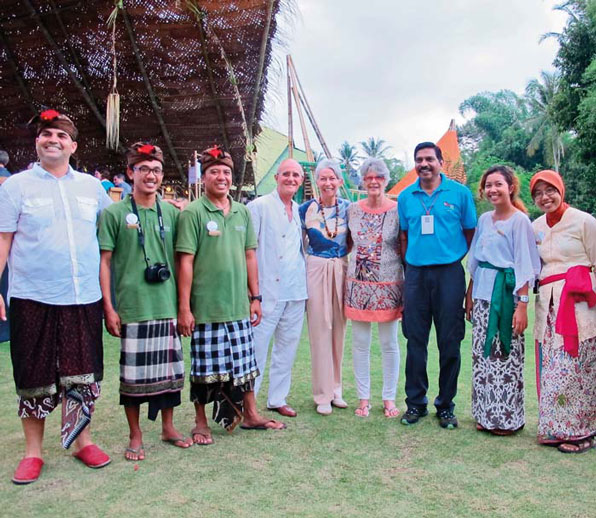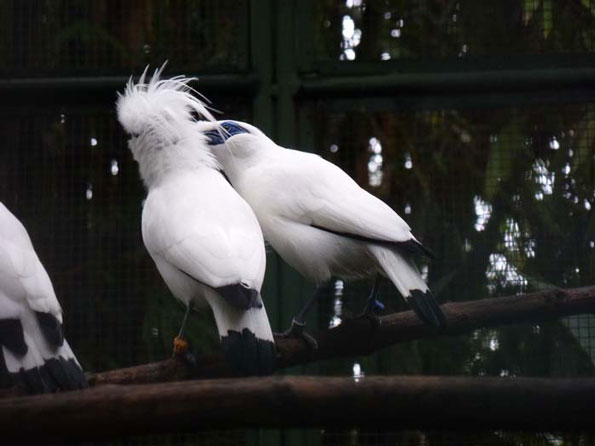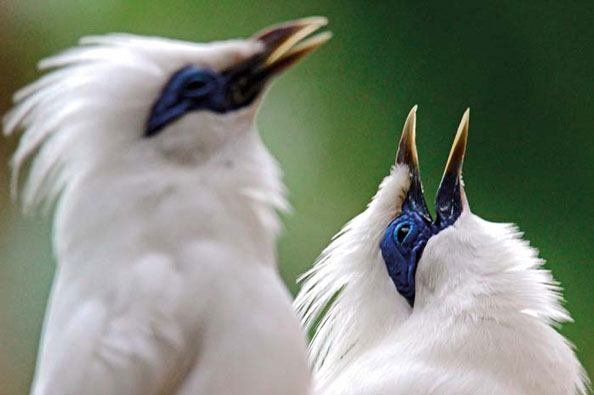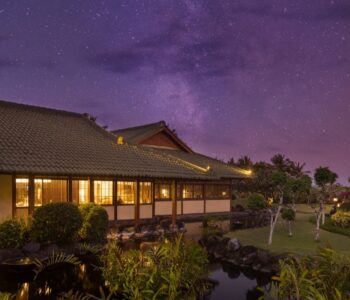The Begawan Foundation was born in 2001, founded by a couple Debbie and Bradley Gardner, who were also the creators of Begawan Giri Estate, however their efforts to conserve nature and take care of people’s health and education took place long before the establishment of the foundation.
NOW!Bali had a wonderful meeting with Bradley and Mehd Halaouate, the Breeding and Release Center Manager at their bird center inside the Green School compound. While the interview took place, several Bali starlings were seen flying freely overhead and perching on tree branches.
[The Begawan Foundation is holding a fundraising dinner on Friday, 10 Feb 2017, A Starling Night. Funds raised from auctions and other will go to helping their efforts in conserving Bali’s nature. For event details, click here.]
How did you start the foundation?
It started when my wife and I developed Begawan Giri Estate back in the 80’s. We started purchasing land in Payangan, and one thing we noticed in the village of Begawan was that there were no bird sounds because the boys were shooting the birds,. This is still going on in Bali today. Boys will be boys and going out shooting things is part of their growing up, but I think education is the most important thing for everyone all over the planet. The first things that are important to anyone in a developing country is that they want full stomachs, they want to make sure the children are educated, and they want a roof over their heads. No one thinks of conservation when they are thinking of their stomachs. When people think about birds flying free there can be two thoughts – sport and food or money. And one of the largest problems at the moment is trapping birds for sale in the wild life markets. As keepers of the world, we are forgetting that people used to be responsible to look after the planet; we were custodians of the planet.
I started the project in the early 80’s because there were no birds. We started buying birds from the bird market, we bought a lot of doves and golden orioles. I kept them in the aviaries, releasing them on the land of Begawan. Their descendants are still there today. Not only the ducks and golden orioles but we also have many other species of birds that return to Begawan because now it’s a protected area, and the people of Begawan do not permit hunting.
When we started to introduce the birds into the wild I became familiar with the Bali starling, Bali’s mascot. Poaching is the biggest threat to the Bali starling, breeding is not the problem. We established the foundation in 2001. Mehd is very professional and very familiar with birds, and alongside Mehd and his team we have a full time veterinarian. They have brought the mortality rate down, the breeding rate up, and we also introduced bloodlines from the west. Our first two pairs were imported from the UK and we bred many offspring from these two pairs. The European Breeding Society gathered together twenty different birds from several different countries, as well as three birds from Jurong Bird Park, so there were 23 birds returning home. Once they breed, only the offspring can be released into the wild. We have great success breeding the bird, but the most important thing is to get them released into a safe habitat. And the safe habitat means safe with people.
 The Founder and staff of Begawan Foundation taken picture with Raja Segran from Wildlife Reserves Singapore
The Founder and staff of Begawan Foundation taken picture with Raja Segran from Wildlife Reserves Singapore
How many birds has the foundation released?
We released the birds in Nusa Penida originally because we thought it would be a safe habitat. Unfortunately it is not anymore. We released 65 birds in Nusa Penida, there should now be around 150 to 200 birds flying all over Nusa Penida. Some of them have migrated to Nusa Lembongan and Nusa Ceningan. Our last audit count was about 12 to 15 birds. We’ve got evidence of traps, ropes and enlarging a hole in a tree. How do we stop this? Through education.
What kind of education programs does the foundation run?
We engaged with a program called Roots and Shoots that was started by Dr Jane Goodall. Carol, who used to be a teacher and a curriculum writer, started here in Sibang to meet with the students and involve the children with the curriculum so they have ownership of the program. We now have a number of classes working with us, we are working with the banjar (community group) and all community leaders including the King of Sibang and the King of Ubud. We assist students and their teachers to look at the role of conservation in the world today. Students from local schools are welcome to the site to be introduced to the Bali Starling and its life.
How can people support the program?
We invite volunteers from all over the world to come to our site and be involved in the program. We also have an Adopt A Bali Starling program that with a fee will provide food, medicine, vitamins and the cost of a caretaker for a Bali Starling for a year. Another funding program is Adopt and Name our Eclectus Parrot Male Baby, which allows one supporter to name the parrot as well as provide the food for the baby parrot for a year.

NOTE:
The note below is a fact that shows that no matter how hard the foundation has been working on conserving the Bali Starling, set backs occur, not because of nature, but because of humans.
In 2005, the foundation had successfully bred the birds, and the population grew from four to 97 birds. In the same year, most of the birds, along with their enclosures, were moved from Begawan Giri Estate to a newly established bird sanctuary, set up in 2004 on Nusa Penida. On July 10th, 2006, 25 micro-chipped birds were released into the wild. Several birds paired up just within two weeks from the release. Their first eggs had hatched by September 10th, and on September 28th, there were three birds instead of two.
A total of 65 birds were released from Begawan Foundation’s captive breeding enclosures. On 26th October 2010, 19 keen ‘bird counters’ from a number of different associations, including a team from Wildlife Reserves Singapore’s Jurong Bird Park, led by its curator, Raja Segran, travelled to Nusa Penida, everyone reporting sightings. A conservative estimate totaled 52 birds, including two flocks of juvenile birds and a number of pairs, some accompanied by their young.
In April 2012, a trip to Nusa Lembongan established the fact that there were at least 12 birds living in two separate enclaves. However, in February 2015, an audit was undertaken again on Nusa Penida with staff from Jurong Bird Park and Wildlife Reserves Singapore, reporting disappointing result; there were only 12 adults sighted with a possible 2 chicks in nests. The numbers confirmed our fears that poaching is taking place. As long as their environment is threatened and their value on the black market tempts poachers and robbers, the Bali Starling will remain one of Indonesia’s most-endangered bird species.
Learn more about Begawan Foundation:
Banjar Pengaji No. 14, Desa Melinggih Kelod, Payangan
Phone: 0361 900 1325
www.begawanfoundation.org










